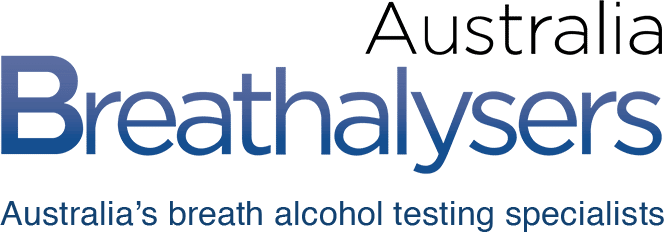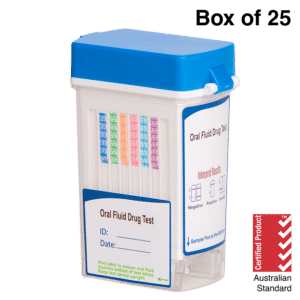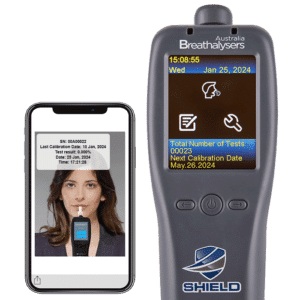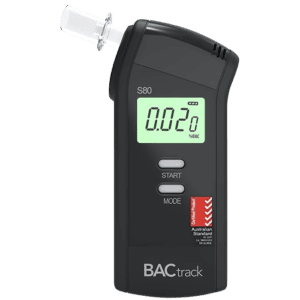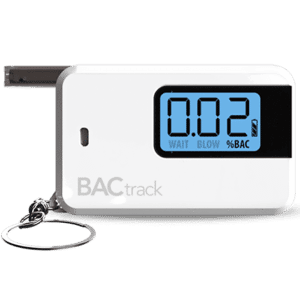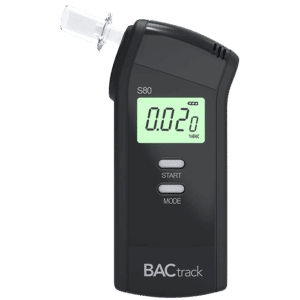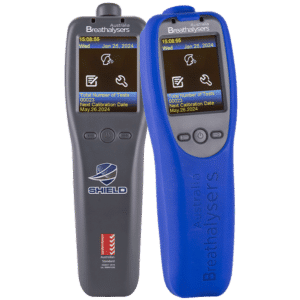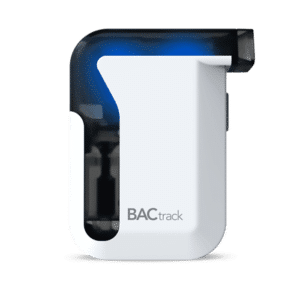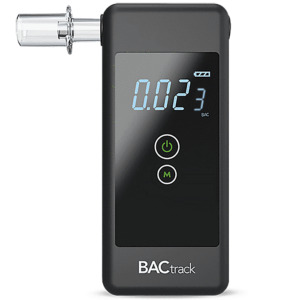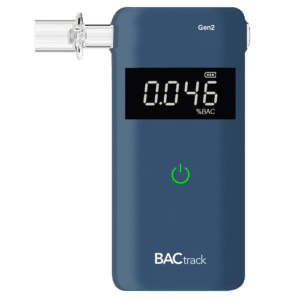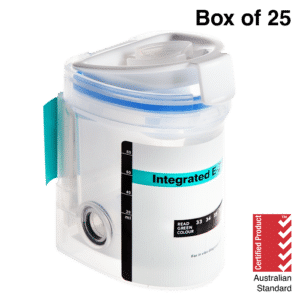Drug and Alcohol Policy: Guidelines for Development and Implementation
07 March, 2024

Developing and implementing a drug and alcohol policy is crucial for maintaining a safe and productive work environment. It is a set of rules and regulations that govern the use of illicit drugs and alcohol in the workplace. This policy provides clear guidelines for employees on what is expected of them in terms of substance use, as well as the consequences for violating these rules. For effective implementation, the policies must be in accordance with local laws and industry standards.
Many workplace accidents happen because of substance misuse issues. Excessive alcohol consumption and illegal drugs can lead to severe impairments and health risks. By having testing programs, companies can minimise these hazards and prevent accidents. Thus, a well-crafted policy is essential for any organisation looking to execute drug and alcohol testing. This article will provide a comprehensive guide to developing a workplace policy, including legal considerations, components, and best practices for implementation.
Jump to a Section:
- What Is a Drug and Alcohol Policy?
- Importance of Implementing a Drug and Alcohol Policy in the Workplace
- Legal Framework of Drug and Alcohol Policies
- Developing a Drug and Alcohol Policy
- Formation of a Drug and Alcohol Policy Committee
- Involving Employees in the Creation of the Drug and Alcohol Policy
- Components of a Drug and Alcohol Policy
- Implementing the Drug and Alcohol Policy in the Workplace
- Handling Test Results as Part of the Drug and Alcohol Policy
- Identifying Areas for Improvement in the Drug and Alcohol Policy
What Is a Drug and Alcohol Policy?
A drug and alcohol policy is a set of guidelines and rules put in place to address issues related to substance abuse in the workplace. The policy outlines the expectations, responsibilities, and consequences for violating the rules and conditions. It also includes information on drug testing procedures, education programs, and employee assistance programs.
Having a comprehensive policy is important for maintaining a safe environment and positive work culture. Substance abuse can lead to impaired judgment, decreased productivity, and increased safety risks. By communicating the stance of the organisation on drug and alcohol use, they help deter drug and alcohol use and prevent issues from arising.
In addition, the provisions of the policy include a ban on drugs and alcohol on company premises or during work hours. Moreover, the testing programs can vary greatly depending on the industry and size of the company. Some workplaces may require more frequent testing than others. Overall, it serves as a tool to promote a safe and healthy work environment.
Purpose of Developing a Workplace Policy
- Protecting employee safety from the hazards of alcohol and drug abuse.
- Setting clear expectations and guidelines for behaviour and conduct.
- Monitor substance use or impairment during work hours.
- Complying with legal regulations and avoiding legal liabilities.
- Increasing employee productivity and efficiency.
- Protecting company assets and information.
- Addressing risks to workplace health and safety, including issues such as absenteeism and workplace conflicts.
- Providing a legal framework for handling disciplinary actions.
- Improving communication and transparency within the organisation.
- Reducing healthcare costs and insurance premiums associated with substance abuse disorders.
- Supporting employees struggling with alcohol and drug dependence.

Importance of Implementing a Drug and Alcohol Policy in the Workplace
The need for implementing a workplace drug and alcohol policy arises from the potential risks associated with illicit substances. Impaired employees may struggle with concentrating and performing their duties effectively. This is particularly critical for safety-sensitive industries. Additionally, alcohol and drug abuse also increase absenteeism and decrease productivity, ultimately impacting the bottom line.
Furthermore, under the Occupational Health and Safety Act, employers have a duty of care to provide a safe workplace for their employees. By having an alcohol and drug policy in place, employers can proactively address potential issues before they escalate. It helps to create a culture of accountability and responsibility among employees, setting clear expectations for acceptable behaviour.
Having a policy also demonstrates the commitment of the company to promoting health and wellness among its workforce. It can serve as a resource for employees who may be struggling with addiction issues, providing information on available resources and support. Finally, employers can implement drug and alcohol testing as a control measure for preventing substance abuse.
Safety Critical Workplaces
Safety-critical workplaces refer to environments where the potential for harm to employees or the environment is significant. These include industries such as transportation, construction, aviation, and manufacturing. These places involve working at heights or the operation of heavy equipment, machinery, or vehicles. Thus, the effects of alcohol and drugs can be severe, leading to accidents, injuries, or even fatalities.
High-risk industries are mandated to have a comprehensive alcohol and drug policy to ensure the safety of employees and the public. Thus, regular testing is crucial for maintaining a safe workplace. Companies may test individuals during hiring, random, blanket, post-incident, or with reasonable suspicion.

Legal Framework of Drug and Alcohol Policies
The development of a drug and alcohol policy must be based on relevant laws and regulations. In Australia, several legislations require employees to provide a safe workplace for their employees. This includes managing all preventable hazards that may result in accidents and injuries, such as drug and alcohol use. Therefore, it mitigates potential lawsuits due to negligence.
State laws may require employers to have a written policy that is easily accessible to all employees. Before implementation, it must be communicated clearly to all. In addition, companies must ensure that their regulations are fair and equal and must comply with privacy laws. Employers must be careful to balance the need for a drug-free workplace with the right to privacy.
In particular, the drug and alcohol testing procedures should be conducted in a non-discriminatory manner. The policy enforces the right to protect the personal information of employees, including their drug test results. Overall, these legal frameworks aim to protect both employees and employers by establishing clear guidelines for dealing with substance abuse issues.
Legislation Governing the Workplace
The Occupational Health and Safety Act is the primary legislation governing workplaces. It sets out key principles for protecting the welfare of employees, contractors, and other people at work. It also aims to ensure the safety of the public is not put in danger because of work activities.
Additionally, the Fair Work Act governs the relationship between employers and employees. It sets minimum standards and conditions for workers. The Act is also responsible for resolving disputes and enforcing compliance with workplace law. This includes imposing disciplinary actions due to policy infringement with due process and fair manner.

Developing a Drug and Alcohol Policy
The first step towards workplace safety is the development of a comprehensive drug and alcohol policy. This is essential for any organisation that wants to implement testing, regardless of its industry or size. There are several key factors to consider when developing a workplace policy. The first step is to clearly define what is acceptable behaviour in terms of drug and alcohol use.
Companies may seek legal experts and safety representatives for advice. They can help in ensuring the policies are in accordance with state or federal laws. Moreover, it is essential to consult with employees or unions to ensure that the policy is fair and reasonable. This can help in gaining support from all stakeholders involved.
When implementing the policy, employers should educate the workforce about the rules and expectations. Explaining the harmful effects of alcohol and illegal drugs can also help educate employees on why they are prohibited. In addition, communicate the disciplinary measures that will be taken if the policy is violated. Lastly, inform employees of future testing obligations.
What Should It Include?
In general, the alcohol and other drugs policy includes the following:
- Policy statement – The scope and objectives of the organisation to maintain a safe and substance-free workplace.
- Testing process – Details on how to conduct drug and alcohol testing. It includes the reasons for testing and the types of methods (urine, saliva, breath testing).
- Prohibited substances – List of substances to be tested for. It typically includes the common drugs of abuse, prescription medications not taken as prescribed, and alcohol.
- Consequences – Disciplinary measures for testing positive for drugs. This may include suspension, grounds for transfer, demotion, or dismissal for breaches of the policy.

Formation of a Drug and Alcohol Policy Committee
One crucial aspect of developing a workplace drug and alcohol policy is the formation of a committee. This consists of key stakeholders from various departments, such as human resources, legal advisors, management, and employee representatives. They play a vital role in ensuring that the policy is fair, effective, and aligned with legal requirements.
One of the main responsibilities of the committee is to conduct a thorough assessment of safety issues and other workplace factors. It also includes reviewing existing practices and identifying areas of improvement. Furthermore, they are responsible for conducting training sessions to educate employees on the company policies. This helps in covering all aspects of alcohol and drug use in the workplace.
The committee is also responsible for regular monitoring and enforcement of the policy to ensure its effectiveness. This can be seen by the amount of positive drug test results, incident rates, and productivity level. In relation to this, regular reviews of the policy should be conducted to ensure it remains relevant and up-to-date with any changes in laws or regulations.
Establishing Key Stakeholders
The key stakeholders of the company typically include senior management, human resources, legal counsel, department heads, and health and safety officers. These individuals and groups have a vested interest in the development and implementation of policies. It is important to involve a diverse range of perspectives to ensure that the policy addresses alcohol and drug issues.
Senior management sets the overall direction of the policy that reflects the values and goals of the organisation. Human resources are responsible for overseeing compliance, conducting training, and handling corrective measures. Additionally, legal counsel ensures that the policy does not violate basic rights.

Involving Employees in the Creation of the Drug and Alcohol Policy
It is advisable to involve employees in the creation of the drug and alcohol policy to ensure it is fair and effective. This includes staff and crew from all departments and ranks. By including employees, management can gather valuable insights and feedback on their perspectives regarding substance abuse. This can help to draft a policy that is realistic and fair to all.
Moreover, involving employees can help increase their commitment to following the policy. When workers feel that their concerns and opinions are valued, they are more likely to adhere to its guidelines and take responsibility and accountability. This can lead to increased morale, productivity, and overall success.
Lastly, it enables a culture of transparency, communication, and trust. Opening a dialogue about substance abuse can help address various areas of concern. This can also encourage employees to seek help and support when needed, leading to a healthier and safer work environment for everyone. Overall, it promotes a healthy collaboration, ensures effectiveness, and minimises legal challenges.
Consultation Process with Employees
One way to involve employees is through the consultation process. It could be in the form of focus groups or surveys to gather input. This can help get unique perspectives that may not have been considered by the top management. In addition, this often includes laying out the groundwork for risk assessment.
During the consultation, employees can discuss their concerns in relation to alcohol and illegal drugs. This helps clear possible conflicts or objections to workplace testing, such as privacy concerns or cultural sensitivities. It also provides an opportunity for employees to ask questions and gain a better understanding of the policy.

Components of a Drug and Alcohol Policy
The drug and alcohol policy includes several key components. Firstly, the scope and objectives. It provides a clear outline of the purpose of the policy and the extent of enforcement. Secondly, the specific rules and regulations. This includes safety conduct, testing procedures, and the definition of prohibited substances. This aspect is essential as it sets the boundaries and expectations for employees.
Thirdly, the consequences of non-compliance. This section outlines the disciplinary measures that will be taken if an employee violates the policy. The violations would include the possession, use, and distribution of illicit substances. Likewise, returning with a positive result constitutes a breach. The penalties would depend on the severity of the violation.
Finally, the support and resources. Aside from imposing penalties, employers should be able to provide resources to employees struggling with addiction. Large corporations often have employee assistance programs to help workers seek treatment. This can include counselling services, rehabilitation programs, or referrals to external services. It allows individuals to overcome their addiction while being able to return to their jobs after full recovery.
Prohibited Substances
Workplace testing usually screens for not limited to the following substances:
- Amphetamines – Commonly known as “uppers”, they are central nervous stimulants that can increase alertness and energy levels.
- Cocaine – A powerful addictive stimulant that is often used recreationally for its euphoric effects.
- Marijuana – It includes THC (tetrahydrocannabinol), the main psychoactive component. It can impair coordination, judgment, and memory.
- Opioids – These include prescription painkillers like oxycodone and illegal drugs like heroin. They are highly addictive and can cause sedation and respiratory depression.
- Alcohol – While legal, excessive consumption can lead to severe impairing effects. Some companies may set acceptable alcohol levels, while others impose zero tolerance.
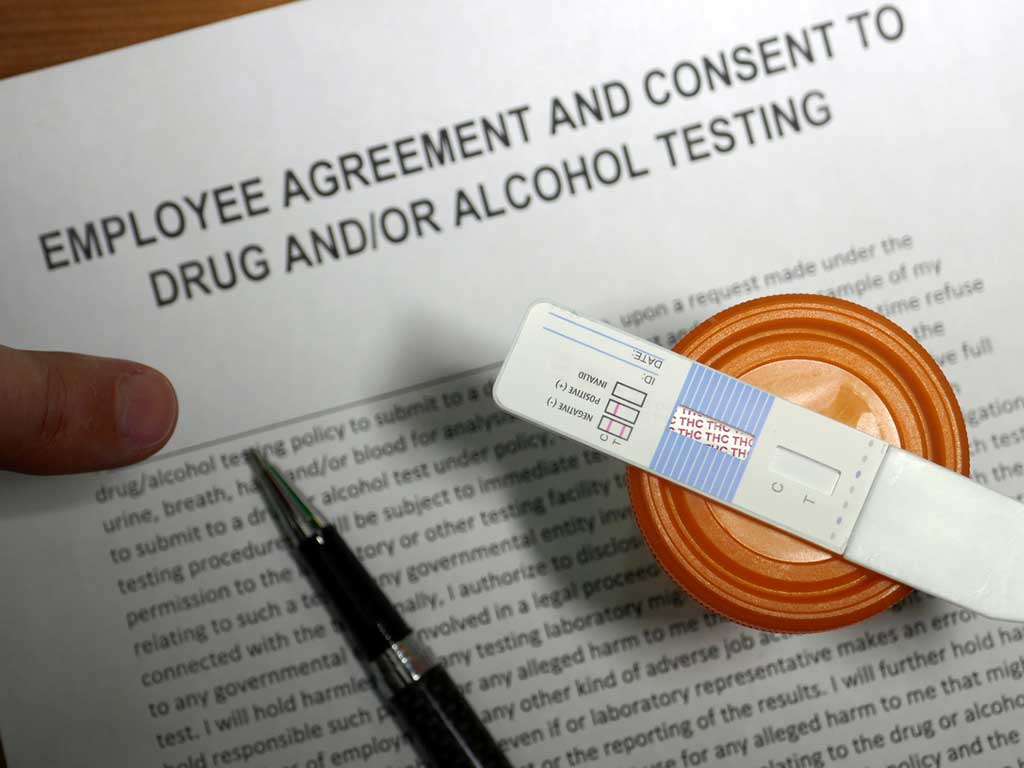
Implementing the Drug and Alcohol Policy in the Workplace
After finalising the drug and alcohol policy, it is now ready to be implemented in the workplace. This can be done through various means, such as training sessions, employee handbooks, and other informational materials. It is important for all employees to understand the policy, their responsibilities, and understand its implications.
Additionally, employers must obtain agreement on the policies to ensure compliance and avoid any legal issues. Before facilitating a drug and alcohol test, they must first secure a signed consent and explain the procedures and the possible consequences. Workplaces have the option to use in-house testing or third-party services. For in-house testing, they can utilise drug testing kits that can provide rapid results.
On the other hand, third-party providers like laboratories and testing agencies offer more comprehensive services. This can also take place in clinics or on-site. Moreover, the test procedures generally involve sample collection, analysis, and interpretation of results. Once the findings are in, the management can make decisions for positive tests based on the protocols in the policy.
Key Guidelines
The key guideline to implementing an effective policy is to have a thorough risk assessment. This is conducted in consultation with workers to ensure it meets the specific needs of the company. Also, obtaining agreement or consent is vital to ensure that all employees are aware of the policy and agree to comply with it.
Furthermore, companies outline the circumstances of when to test or the reasons for testing. Part of this is to decide which type of test method to use. Employers may also choose the most cost-effective testing option to screen employees, such as using test kits or laboratory procedures.

Handling Test Results as Part of the Drug and Alcohol Policy
An essential aspect of the drug and alcohol policy is the handling of the test results. It is important to note that test results are considered personal information and must be treated confidentially. Mainly, tests may either be positive or negative. If it is negative, the employee can proceed to work as usual. However, if the test is positive, the management must follow a specific protocol in handling the result.
Handling positive test results usually involves informing the concerned employee in a private meeting and discussing necessary steps moving forward. The individual should also have the opportunity to explain or contest the findings. This can be done through a confirmatory test or further investigation.
Depending on the severity of the situation, the employee may face verbal or written warnings, suspension or termination. Individuals may also choose to undergo a rehabilitation program to address the issue of drug or alcohol abuse. It is crucial for employers to maintain a consistent approach in handling positive test results to ensure fairness for all employees.
Employee Confidentiality
Maintaining confidentiality is paramount when implementing an alcohol and drug testing program. Test results should only be shared with the concerned employee and authorised personnel like HR or managers. It is essential for employers to establish guidelines on who has access to this information and how they should handle it.
Breach of employee confidentiality can result in legal implications for the company. This can create legal risks such as privacy violations, discrimination claims, or even lawsuits. It is also emphasised in the legal framework of the policy. Thus, it is vital for employers to uphold privacy and respect the rights of employees.

Identifying Areas for Improvement in the Drug and Alcohol Policy
A periodic review of the drug and alcohol policy is advisable to ensure its effectiveness. This can help identify areas for improvement and address any issues that may have arisen since its implementation. For example, employers can gather feedback from employees to see if the policy is working as intended and if there are any gaps that need to be filled.
Moreover, staying updated with the latest trends and advancements in drug and alcohol testing can help improve the efficacy of the policy. Employers may consult with their trusted testing partners to see if any testing processes need updating. Similarly, organisations can update the policy to reflect changes in legislation or industry standards.
Another key aspect of improving the policy is to provide ongoing training and education for employees. This can help raise awareness about the risks associated with drug and alcohol abuse and ensure that everyone understands their responsibilities under the policy. Training can also help employees identify signs of substance abuse in themselves or colleagues, as well as how to seek help or support.
Evaluating Current Practices
- Review the current safety protocols to assess if they are sufficient to prevent or minimise workplace accidents or injuries.
- Evaluate the efficacy of current testing procedures and consider if they are sufficient to detect substance abuse among employees. This may include the frequency of testing, types of tests conducted, and the accuracy of results.
- Assess the effectiveness of disciplinary actions taken against employees who test positive for drugs or alcohol. Determine if these actions are deterrent enough to prevent future violations.
- Review the confidentiality measures to see if there are any gaps in the current system that could lead to breaches.
Conclusion
Having a clear drug and alcohol policy is vital for maintaining a safe work environment. An effective one can help minimise or eliminate the hazards of substance use that can lead to unsafe work performance. The policy typically outlines the procedures for testing, consequences for violations, employee rights, and support resources available to employees. In addition, it should comply with relevant laws and industry standards to protect both employees and the company.
There are several key guidelines when developing the policy. It includes forming a committee that represents various stakeholders and conducting employee consultations. Furthermore, continuous evaluations and updates are essential to keeping up with industry trends and legal requirements. By following the guidelines and meeting legal obligations, companies can effectively address issues surrounding harmful alcohol consumption and drug use. Ultimately, it helps to improve workplace productivity, employee morale and well-being.





